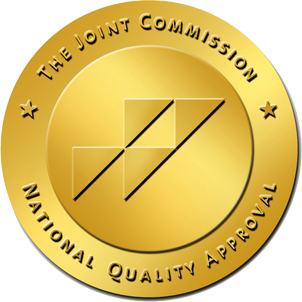
For most people, rehab means a 28-30-day stint in a recovery clinic. That standard care often feels like a long time for many of us, especially when we have to take time off of work, away from childcare, and away from other life responsibilities and goals. At the same time, modern medicine and research increasingly shows that 30 days is not enough to offer the full term of support and care that most people need. For that reason, long-term addiction rehab, or rehab that extends up to 6 months, is increasingly available. Here, long-term addiction rehab facilities often adjust the treatment model to the patient. This means that you receive care for as long as your doctor and provider thinks you need it.The 30-day treatment model still offers convenience and an alternative to those who can’t afford a longer term of care. However, continuing with outpatient treatment after an inpatient stay is still recommended.
There are many reasons why long-term addiction rehab produces better outcomes than the traditional model. If you’re considering investing in longer care for you or your loved one, it’s important to understand why, and what the differences are.
Based on Biological Recovery
Most people are aware that recovering from the physical impacts of addiction can take a very long time. Few of us are aware of just how long. For example, the early impacts of addiction on the reward system typically fade within 30-90 days depending on the individual. After 30-90 days of treatment, your brain will be at a semi-permanent state of “recovery” for the next 12-24 months. From there, you’ll continue to heal, but more slowly.
For many people, it does take 1-2 years before your brain resembles a “control” subject of someone who hasn’t been addicted to drugs or alcohol. For example, it typically takes about 14 months for your brain to show levels of dopamine transporters at levels similar to those of persons who have never been addicted. Brain imaging from persons who were abstinent after alcoholism also showed that the longer individuals were abstinent, the better brain recovery was. For example, individuals who were abstinent for 10 months were significantly more likely to show normal volumes in areas of the brain related to executive control, salience, and emotional processing than individuals who were sober for 1 month.
On the other hand, your brain may never fully recover from addiction. The earlier you start using or drinking, the more permanent changes will be. For example, adolescents who heavily drink are likely to never have a brain that functions the same as a control subject who never had an addiction. Still, that just means you’ll need more ongoing support, rather than that you can’t live without drugs or alcohol.
Essentially, your body takes a long time to recover from addiction. Spending one month in rehab can help you to overcome the worst of cravings. For many others, that process takes up to 90 days. From there, you’ll still have a long uphill battle as your brain slowly returns to normal.
Get Your Questions Answered
Our expert & caring staff on site are available 24/7. Call us today.
Benefits of Long-Term Drug Rehab
Long-term drug rehab is typically delivered in one of several ways, depending on your resources and time. These include:
- A longer stay of 90+ days in a rehab facility where you’ll receive full support and ongoing care in a facility, followed by aftercare when you leave
- A 30-day stay in residential treatment followed by 6+ months of outpatient treatment
- A 30-day stay in residential treatment followed by a stay in a sober home and 6+ months of outpatient treatment

Here, you’ll normally get a therapy and counseling schedule that’s very similar to what you’d get in a shorter-term rehab. However, it will extend for longer. You’ll also get additional tracks of long-term self-care, physical health, mental recovery, social recovery, etc., to help you rehabilitate back into your life, rather than just helping with the immediate pressing issue of the substance use disorder.
Building Structure – The longer your stint in rehab, the more time you’ll have to build the structure and habits that allow you to live in a healthy way. For example, most people are aware of the “24 days to build a habit” maxim. Few of us are aware that in reality that scales from 14-90+ days. The longer you have to repeat habits like daily exercise, cleaning, self-care, meals, etc., the more you’ll be able to make those routines a normal part of your life, without extra effort. Therefore, spending more time in rehab means you’ll have more time to make structure a normal part of your life. You’ll also have more time to benefit from structure set up by someone else, so you don’t have to worry about or think about things like ensuring you’re eating well, that you’re getting enough exercise, etc. You’ll get the healthy lifestyle while having the headspace to focus on your recovery, managing your mental health, and working through counseling and therapy.
Ongoing Care –Traditional rehab means you get a few weeks of detox followed by a few weeks of intensive therapy and care. With long-term rehab, you get detox and then as much ongoing therapy as you need. This means that your program is completely scaled to meet your needs to help you work through pressing issues as they come up and then to continue to help you build healthy coping skills, healthy life skills, social skills, etc.
A Focus on Life Rehabilitation – Long-term drug rehab means you can shift the focus of mental healthcare away from triage and focusing on immediate issues like cravings and addiction and towards helping you build the skills for a healthy and happy life. That means skills to cope with cravings, time management, emotional regulation, learning to build healthy and fulfilling social relationships, introducing self-care, learning to manage mental health, etc. That will, eventually, mean you’re set up to be much more stable and healthy when you do go back to your life.
Support as Long as You Need It – If you’re staying in rehab as long as you need it, you can get the care you need. That means continuing each part of your track until you’re actually ready to graduate. That means you can focus on recovering from and dealing with cravings for as long as you need. When you’re ready to move on from that, you can do so. You can spend as much time as you need to learn how to manage stress, emotional regulation, and anything else that comes up during the course of your treatment. That will, eventually, give you a much better baseline to deal with and manage yourself and your life. Recovery at your own pace also means you can get treatment for years on an outpatient basis, and you don’t have to stop going to care until you’re ready to do so.
Aftercare – It doesn’t matter how long treatment is, you should always get aftercare. That means options to restart treatment and to have checkups, ongoing sessions with counselors, and meetups with your peers. Long-term addiction rehab typically provides that as a standard part of treatment, meaning you know that when you graduate from care, you’ll have follow-up sessions to ensure you’re still doing well, you’ll have opportunities to reconnect with people, and you’ll have opportunities to give back where you want to.
Long-term addiction rehab is an investment because it takes more of your time and for longer. However, it provides you with a baseline to build a healthy life, to get treatment at your own pace, and to stay in care for as long as you need it. It’s not the right solution for everyone, but for many people, it means you’re opting into long-term support and structure, so you get what you need to stay clean and sober.
If you or your loved-one struggles from alcoholism or other substance abuse please contact us today and speak with one of our experienced and professional intake advisors about our alcohol rehab, detox, partial hospitalization, and residential treatment programs. 10 Acre Ranch also has specialty tracks like our pet friendly drug rehab and couples substance abuse treatment programs. We’re here to help you recover.






